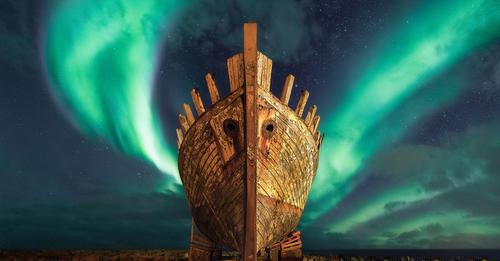:focal(1061x707:1062x708)/https://tf-cmsv2-smithsonianmag-media.s3.amazonaws.com/filer_public/ae/06/ae06cdde-7b3a-4884-95c4-b36fd813367d/gettyimages-1279962736.jpg)
Juan Maria Coy Vergara via Getty Images
During the Viking Age, from 750 to 1050 C.E., Scandinavians were on the move. The seafaring Vikings were the first people to reach four different continents, visiting Europe, Asia, Africa and North America. As they did, they exchanged goods, technology and culture—as well as genes.
In a study published last week in the journal Cell, scientists examined nearly 300 ancient human genomes from Scandinavia that span a 2,000-year period, painting a picture of the region’s genetic history.
They looked at 48 new and 249 previously published ancient genomes and compared them to 16,638 genomes from modern humans. New evidence from several archaeological sites, including the wreck of the Swedish warship Kronan, helped reveal how the prevalence of genes from three regions—the British and Irish Isles, the eastern Baltic and Southern Europe—varied across time and space.
“I do not think there is any other study digging this deep into Scandinavia,” Anders Götherström, a study co-author and molecular archaeologist at Stockholm University’s Center for Paleogenetics, tells Gizmodo’s Isaac Schultz.
British and Irish ancestry was present across Scandinavia at the time, while eastern Baltic ancestry was contained in central Sweden and Gotland, a Swedish island in the Baltic Sea. Southern European ancestry appeared in remains from southern Scandinavia.
The study “confirms that the Viking Age—besides representing the past expansion of Scandinavians to other regions within Europe—also enabled the first arrival of diverse foreign genomic ancestries into the Scandinavian Peninsula,” Andre Luiz Campelo dos Santos, an archaeologist at Florida Atlantic University who did not contribute to the study, tells Gizmodo in an email.
Migrations varied by region: People who came to Scandinavia from the British and Irish Isles might have been high-ranking Christian missionaries or monks, or they might have been enslaved people Vikings transported against their will.
From some regions, the influx appeared to be sex-based and mainly made up of women. Female arrivals from the east Baltic and, to a lesser degree, the British and Irish Isles drove the impact of these areas on the genetic makeup of Viking-age Scandinavia.
“We have no way to know with our data the number of women involved or if these women with east Baltic and British-Irish ancestries were in Scandinavia voluntarily or involuntarily,” Ricardo Rodríguez-Varela, the study’s first author and a molecular archaeologist also with the Center for Paleogenetics, tells Reuters’ Will Dunham.
The researchers also found that some of the ancestries that appeared during the Viking Age are less prevalent than they are today, writes Popular Science’s Laura Baisas.
“Although still evident in modern Scandinavians, levels of non-local ancestry in some regions are lower than those observed in ancient individuals from the Viking to Medieval periods,” Rodríguez-Varela says in a statement. “This suggests that ancient individuals with non-Scandinavian ancestry contributed proportionately less to the current gene pool in Scandinavia than expected based on the patterns observed in the archaeological record.”
The researchers aren’t sure why this is the case, but they say future studies with more genomes could shed light on the question, per Gizmodo.
